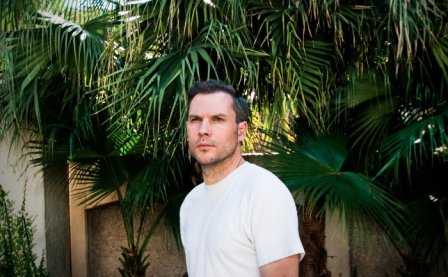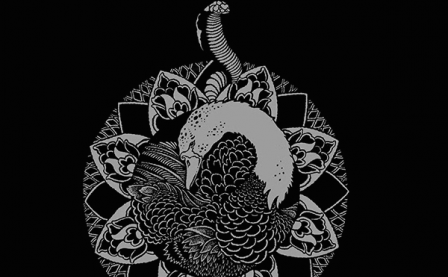For years, Om's sound had been specific to one droning, lurching, tribal throb, threatening to pigeonhole them to a genre corner, forever locking them into stoner-doom hell. Nestled in that corner, they would have had the privilege of sitting around a table with Reginald VelJohnson, Joe Pesci, and Leonard Nimoy, lamenting the static, inflexible flavor of their life's work. This, however, is not the fate of Om; it was only a matter of time before a significant mutation occurred. To that end, God is Good shows a clear effort to steer their boat past the Nile, past Yemen, and into new territory.
It begins with a tambura drone that lasts well into the eight-minute mark. Next to a subtly shifting jazz-inflected bassline (with minimal fuzz tone), the whole affair resembles Alice Coltrane's Journey to Satchidananda (at least in spirit). This is Om venturing beyond their bread and butter sound, the hypnotic stoner doom metal vibe created by rumbling, pounding bass and steady, unrelenting drums. The new effect is a meditative, ritualistic goop, dripping with the cryptic and unfathomable lyrics of Al Cisneros. Indeed, attempting to interpret his words is like trying to read Umberto Eco's Foucalt's Pendulum, inspiring repeat missions to the Wikioracle with the intention of gleaning a rationale behind the chanting. But even extensive research can only scratch the surface, and we are left wondering if the efforts of Om might not be some kind of conspiratorial audio from a Dystopian underworld, bent on unleashing a zombie attack led by bloodthirsty Knights Templar.
Significantly, God is Good marks the first studio release to feature drummer Emil Amos. (Chris Hakius, the previous Om drummer who also played with Cisneros in Sleep, left the band.) However, it's not until close to the nine-minute mark on track one before we are introduced to his loose, jazzy drumming. Although Amos is still able to carry the steady, challenging rhythm for the length (which was Hakius' speciality), his style seems richer, more complex than Hakius' efforts. And in addition to the extra instrumentation (tabla, tambura, flute), the end effect feels remarkably different from previous Om compositions, a mighty infusion of spice road flavor that makes it feel half-Roma, half-stoner.
The two-part "Cremation Ghat" jam is a clear indication that Om is more than willing to cast off a simpler formula in favor of a wider array of sounds. Cisneros' bass is less overdriven, with cleaner tones that further enhance the traditional feel of these new Om figures. At times, there is almost a Taraf de Haïdouks aesthetic to these tracks, a rolling tonic and a curse being cast from the shadows of a ramshackle gypsy wagon bumping along. In some ways, this new direction puts them much closer to Latcho Drom (a French documentary about Gypsies) than The Melvins: their caravan is full of myth, led by Acheron, guarded by hydra-headed canines, and boasting some seriously mystical Judeo-Christian mumbo-jumbo. Here is promise, a new direction, and still a bit of the old magic to boot.
1. Thebes
2. Meditation Is the Practice of Death
3. Cremation Ghat I
4. Cremation Ghat II
More about: OM




